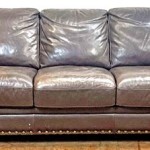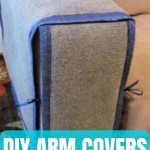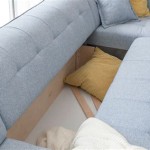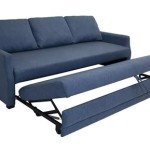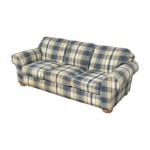Faux Leather Sofa Cleaner: A Comprehensive Guide
Faux leather sofas, also known as leatherette or PU leather sofas, offer an attractive and often more affordable alternative to genuine leather. They mimic the look and feel of real leather while presenting advantages in terms of cost, ease of maintenance, and ethical considerations. However, despite their durability, faux leather sofas require proper cleaning and care to maintain their appearance and longevity. Selecting the appropriate faux leather sofa cleaner and employing the correct cleaning techniques are crucial for preserving the integrity and beauty of the material.
This article provides a comprehensive guide to faux leather sofa cleaning, covering essential aspects such as identifying faux leather types, selecting appropriate cleaning supplies, detailing step-by-step cleaning procedures, and offering preventative maintenance tips. Understanding the specific characteristics of faux leather and adopting a consistent cleaning routine will ensure the sofa remains a stylish and comfortable centerpiece in the home.
Identifying Faux Leather Types
Before embarking on any cleaning process, it is essential to identify the type of faux leather used in the sofa's construction. This is crucial because different faux leather materials may react differently to various cleaning agents. The two primary types of faux leather commonly used in furniture are polyurethane (PU) leather and polyvinyl chloride (PVC) leather.
Polyurethane (PU) Leather: PU leather is generally considered a higher-quality faux leather material. It is manufactured by applying a polyurethane coating to a base fabric, such as cotton or polyester. PU leather is more breathable and flexible than PVC leather, closely resembling the texture and feel of genuine leather. It is also more environmentally friendly due to its reduced use of harmful chemicals during manufacturing.
Polyvinyl Chloride (PVC) Leather: PVC leather, also known as vinyl, is a less expensive alternative to PU leather. It is created by coating a base fabric with a layer of PVC. PVC leather is more durable and water-resistant than PU leather, making it suitable for high-traffic areas. However, it is less breathable and tends to feel less supple compared to PU leather. It is also less environmentally friendly due to the presence of chlorine in its composition.
Determining the type of faux leather can often be accomplished by examining the manufacturer's label attached to the sofa. If the label is unavailable, a discreet spot test using mild soap and water can help assess the material's reaction. If the material exhibits excessive discoloration or damage after the spot test, consulting a professional cleaning service is recommended.
Selecting Appropriate Cleaning Supplies
Choosing the right cleaning supplies is critical for effectively cleaning a faux leather sofa without causing damage. Harsh chemicals and abrasive cleaners can strip the material's protective coating, leading to discoloration, cracking, and premature wear. The following are recommended cleaning supplies for faux leather sofas:
Mild Dish Soap: A gentle dish soap diluted in warm water is a versatile and effective cleaning solution for removing everyday dirt and grime. Ensure the dish soap is free of harsh chemicals, bleach, or abrasives. A pH-neutral formula is ideal.
White Vinegar: White vinegar is a natural cleaning agent that can help remove stubborn stains and odors. Dilute white vinegar with water in a 1:1 ratio before application. The acidity of vinegar helps break down grease and grime without damaging the faux leather.
Baking Soda: Baking soda is a mild abrasive that can be used to remove tough stains and absorb odors. It is particularly effective for dealing with grease stains. Create a paste by mixing baking soda with water and apply it to the affected area.
Microfiber Cloths: Microfiber cloths are soft, absorbent, and non-abrasive, making them ideal for cleaning faux leather surfaces. They effectively lift dirt and grime without scratching or damaging the material. Avoid using rough cloths or sponges, as they can cause abrasions.
Spray Bottle: A spray bottle is useful for applying cleaning solutions evenly onto the faux leather surface. Choose a spray bottle that produces a fine mist to avoid oversaturation.
Leather Conditioner (Optional): After cleaning, applying a leather conditioner specifically formulated for faux leather can help maintain its suppleness and prevent cracking. Ensure the conditioner is compatible with the specific type of faux leather.
Vacuum Cleaner with Upholstery Attachment: Regular vacuuming with a soft brush upholstery attachment will help remove loose dirt, dust, and debris from the sofa's surface and crevices.
Step-by-Step Cleaning Procedures
Following a systematic cleaning procedure is essential for achieving optimal results and preventing damage to the faux leather sofa. The following is a detailed guide to cleaning faux leather sofas:
1. Vacuuming: Begin by vacuuming the entire sofa using a soft brush upholstery attachment. Pay close attention to crevices, seams, and areas prone to accumulating dust and debris. This step removes loose particles that could scratch the faux leather during subsequent cleaning steps.
2. Preparing the Cleaning Solution: Mix a small amount of mild dish soap with warm water in a bucket or bowl. Alternatively, create a solution of equal parts white vinegar and water. Test the cleaning solution on an inconspicuous area of the sofa to ensure it does not cause discoloration or damage.
3. Applying the Cleaning Solution: Dampen a clean microfiber cloth with the cleaning solution. Wring out the cloth thoroughly to prevent oversaturation. Gently wipe down the entire surface of the sofa, working in small sections. Avoid applying excessive pressure or scrubbing vigorously.
4. Removing Stains: For stubborn stains, apply a paste of baking soda and water to the affected area. Allow the paste to sit for 15-20 minutes. Gently rub the paste with a clean, damp microfiber cloth until the stain is removed. Rinse the area with clean water and pat dry.
5. Rinsing and Drying: After cleaning, dampen a clean microfiber cloth with clean water and wipe down the entire sofa to remove any remaining cleaning solution. Pat the sofa dry with a clean, dry microfiber cloth. Allow the sofa to air dry completely before using it.
6. Conditioning (Optional): Once the sofa is completely dry, apply a leather conditioner specifically formulated for faux leather. Follow the manufacturer's instructions for application. The conditioner will help maintain the material's suppleness and prevent cracking.
7. Spot Cleaning: Address spills and stains promptly to prevent them from setting into the faux leather. Blot the spill with a clean, absorbent cloth. Avoid rubbing, as this can spread the stain. Clean the area with a mild soap and water solution, rinse, and pat dry.
Preventative Maintenance Tips
Regular preventative maintenance is crucial for extending the lifespan and maintaining the appearance of a faux leather sofa. Implementing the following tips can help prevent damage and minimize the need for frequent cleaning:
Regular Vacuuming: Vacuum the sofa at least once a week to remove loose dirt, dust, and debris. This prevents the buildup of particles that can scratch or damage the faux leather.
Avoid Direct Sunlight: Prolonged exposure to direct sunlight can cause fading and cracking of the faux leather. Position the sofa away from direct sunlight or use window coverings to filter the light.
Use Coasters and Placemats: Protect the sofa from spills and stains by using coasters for drinks and placemats for food. This will prevent liquids and food particles from penetrating the faux leather.
Avoid Sharp Objects: Keep sharp objects, such as knives, scissors, and pet claws, away from the sofa to prevent scratches and tears.
Rotate Cushions: Rotate cushions regularly to ensure even wear and prevent them from becoming flattened or misshapen in specific areas.
Use a Leather Protector: Apply a leather protector specifically designed for faux leather to create a barrier against stains and spills. Reapply the protector periodically according to the manufacturer's instructions.
Professional Cleaning: Consider professional cleaning services for deep cleaning and stain removal, especially for difficult stains or heavily soiled sofas. Professional cleaners have the expertise and equipment to safely and effectively clean faux leather sofas.
By following these preventative maintenance tips and adhering to a consistent cleaning routine, faux leather sofas can maintain their beauty and durability for years to come. Choosing the right cleaning supplies and employing gentle cleaning techniques are essential for preserving the integrity of the material and preventing damage. Regular care and attention will ensure the sofa remains a comfortable and stylish centerpiece in the home.

How To Clean A Faux Leather Couch Maid 4 Cleaning Inc

The Right Way To Clean A Faux Leather Furniture

How To Clean Faux Leather Furniture And Clothing Lovetoknow

Caring For Pu Pvc And Faux Leather Sofas Furniture Picket Rail Custom Interiors

Cleaning Faux Leather Guide How To Wash Cleanipedia
How To Clean Faux Leather Frugally

How To Clean A Faux Leather Sofa Chill Sofas

Complete Guide To Cleaning And Maintaining Faux Leather Sofa

How To Clean A Faux Leather Sofa Inspiration Furniture And Choice

How To Clean Faux Leather Bags Furniture Jackets Shoes Von Baer

